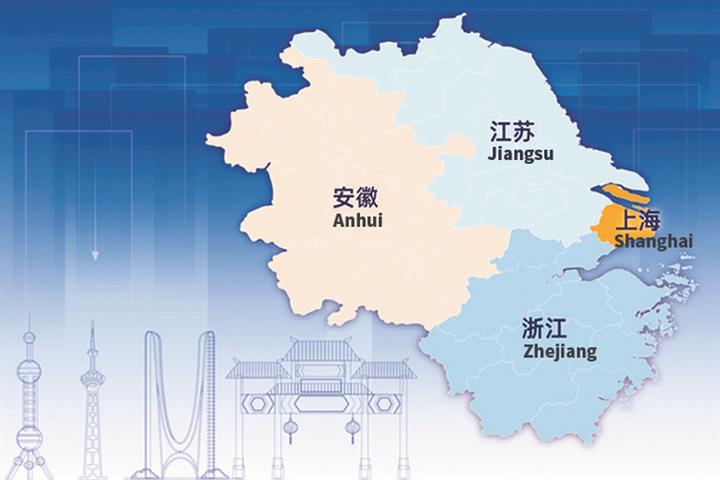 Yangtze River Delta Region Accounted for 24.5% of China’s GDP in First Half
Yangtze River Delta Region Accounted for 24.5% of China’s GDP in First Half(Yicai Global) Oct. 25 -- The Yangtze River Delta region, which comprises Shanghai and parts of Zhejiang, Jiangsu and Anhui provinces, made up almost a quarter of China’s total economic output in the first half.
Three years after state planners set out an integrated development plan to turn the Yangtze River Delta into an economic powerhouse, the region accounted for 24.5 percent of the country’s gross domestic product in the six months ended June 30, up from 24.1 percent in the same period in 2018, the Shanghai Securities News reported today, citing Hua Yuan, the deputy secretary-general of the Shanghai municipal government and director of the office for Yangtze River Delta’s regional collaborations.
Many sector-leading firms such as chipmakers Semiconductor Manufacturing International Corp. and Huahong Group have positioned themselves in the Yangtze River Delta region in order to achieve industrial synergy.
The Yangtze River Delta Entrepreneur Alliance is packed with almost 100 heads of leading companies in key industries and chambers of commerce who seek to integrate elements in their firms’ upstream and downstream industrial chains to match supply and demand and achieve the unification of criteria.
There is also a service platform for the sharing of science and technology resources which has already gathered 36,959 sets of scientific data, improving efficiency in research and development and cutting costs.
The region is also promoting inter-regional financial synergy. The Shanghai Stock Exchange has set up 32 workstations to assist in the promotion of the Nasdaq-style Star Market and the listing process. Just under half of the mainland’s listed firms are based in the Yangtze River Delta, at 160.
Over 6,000 kilometers of high-speed railway track crisscrosses the region. And all its major ports, including Wuhu in Anhui province as well as Jiangsu province’s Nanjing, Jiangyin and Suzhou cities, are directly connected to Shanghai’s Yangshan deep-water port, one of the busiest port facilities in the world, by river or sea.
The region is hooked up with 221,000 wireless network base stations, just over a quarter of the total in China. It also has over 1,000 innovative applications of the Industrial Internet, Internet of Vehicles, intelligent manufacturing and smart cities.
The Yangtze River Delta region is also big on public welfare. It has initiated the direct settlement of outpatient healthcare payments in a number of cities, involving CNY1.55 billion (USD242.7 million).
Editor: Kim Taylor